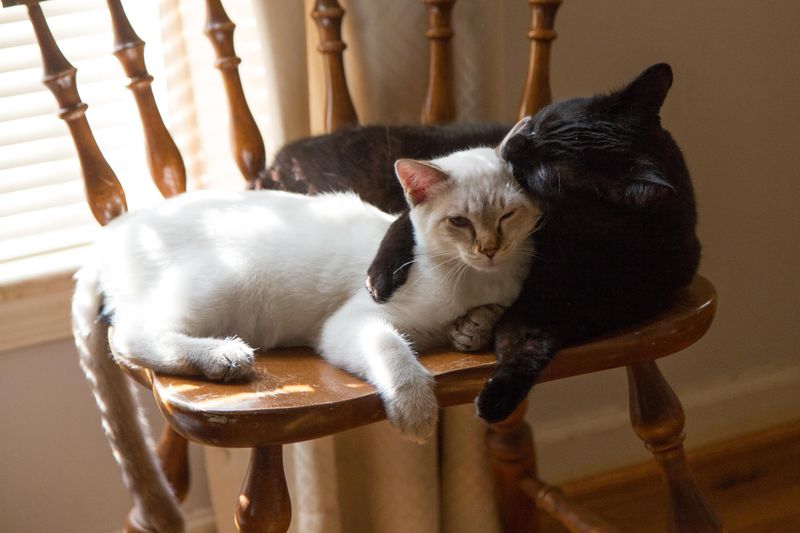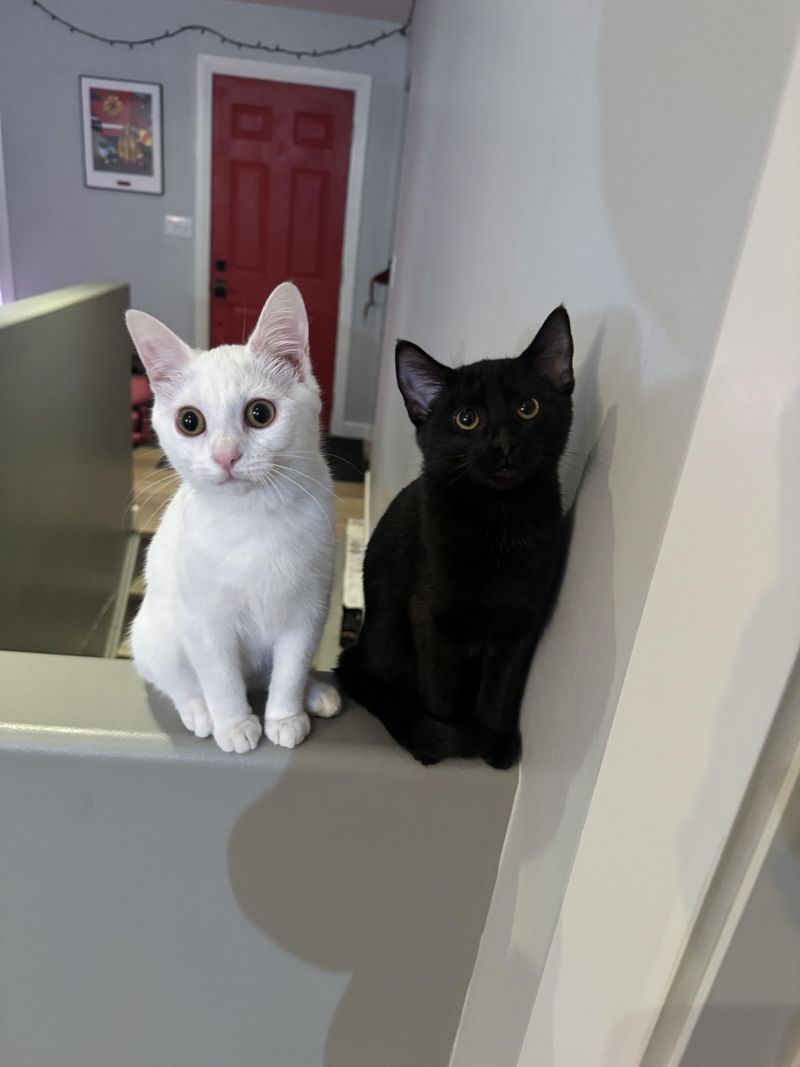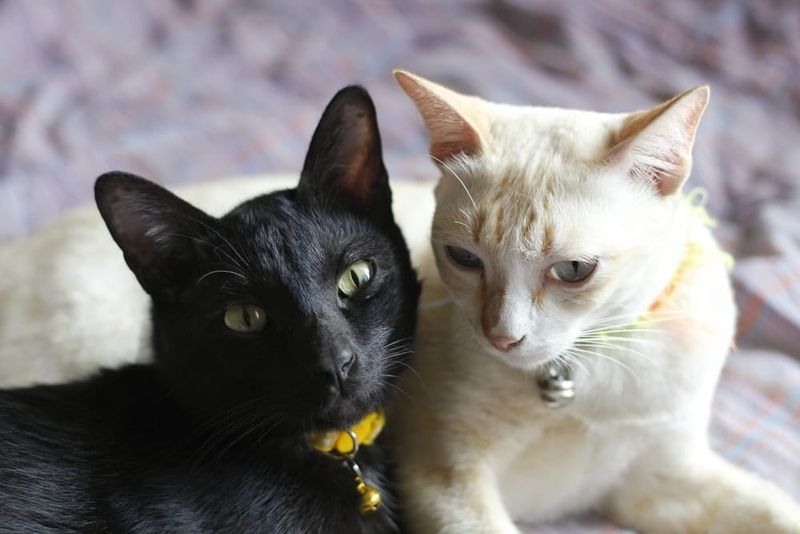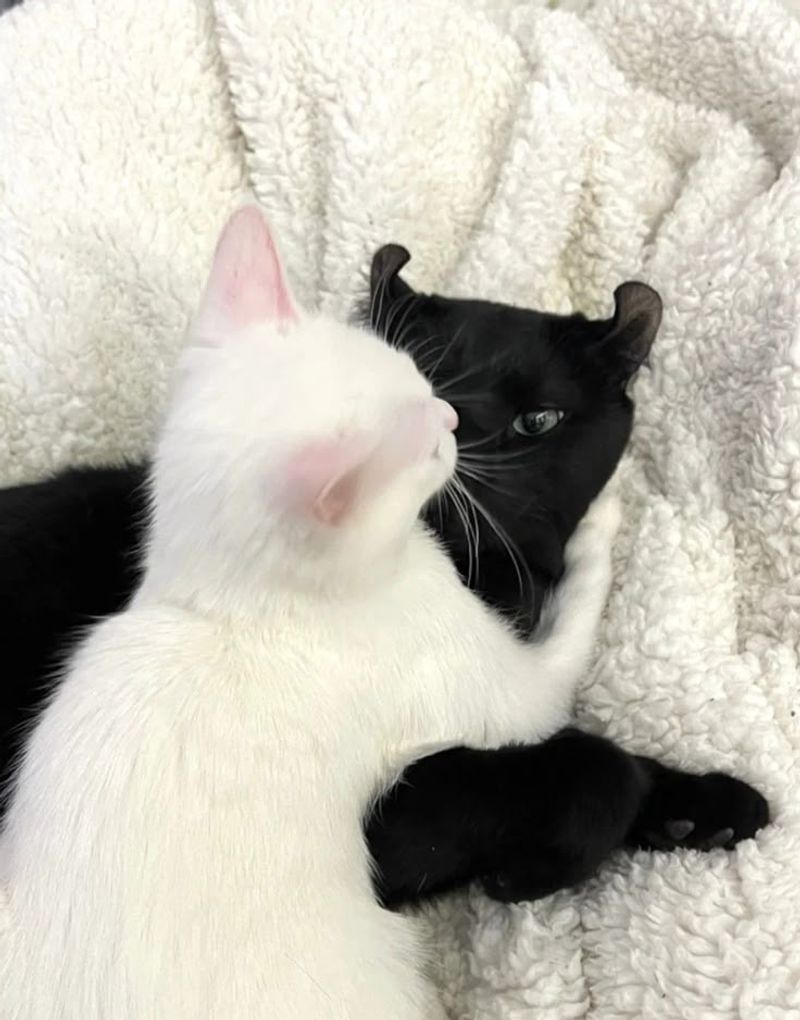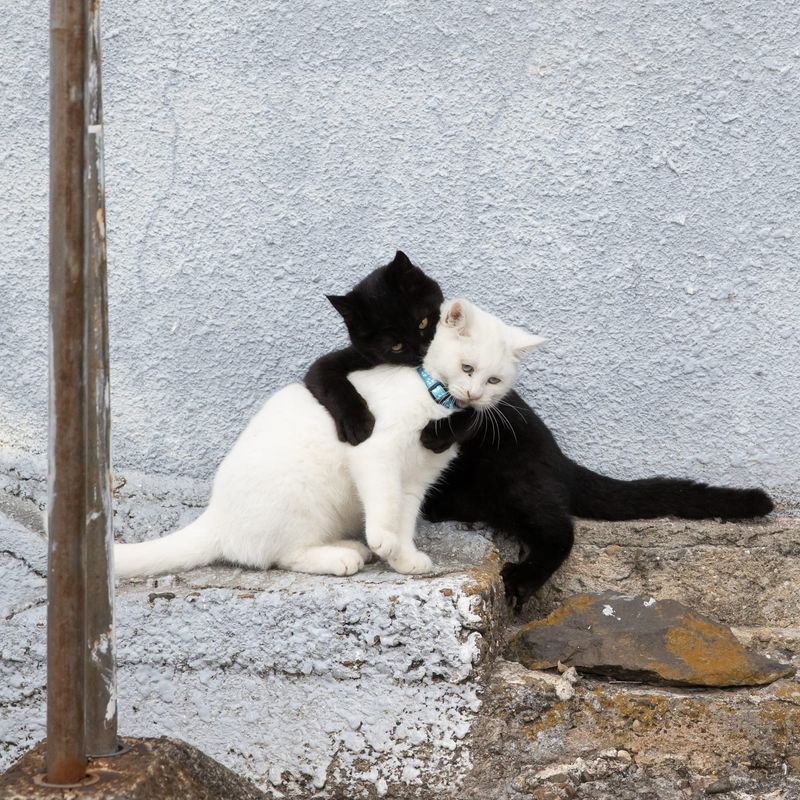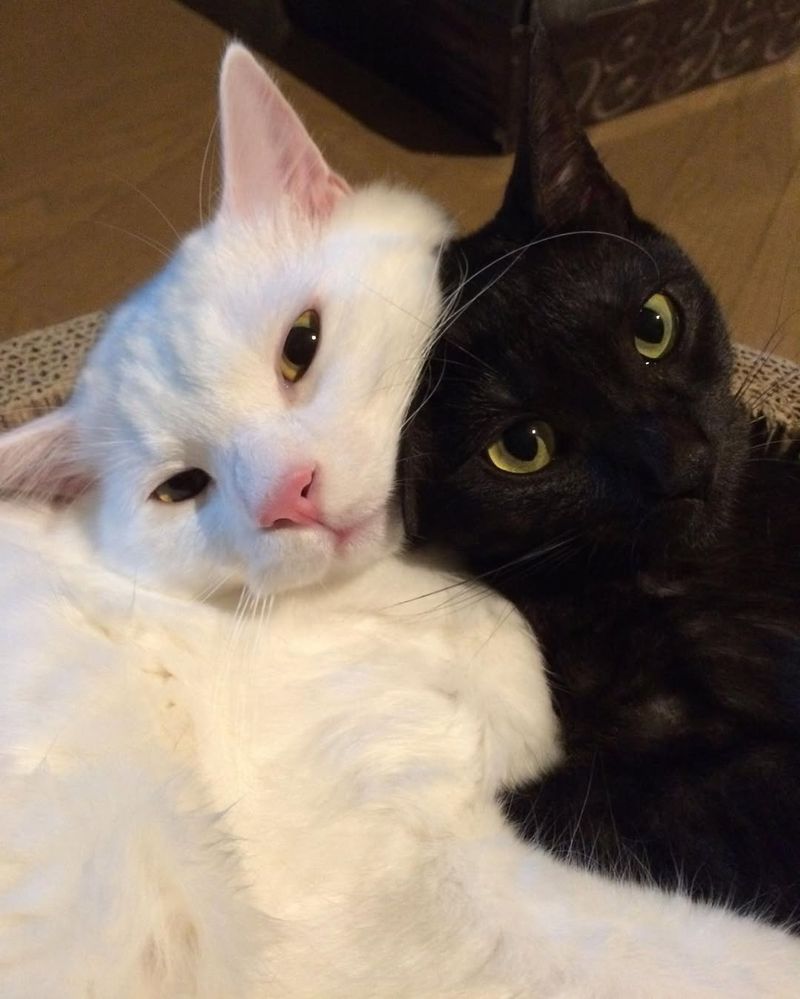📖 Table of Content:
Black cats have long captured hearts with their sleek elegance, quiet charm, and air of mystery. If you’re lucky enough to share your home with one, you already know how special these dark-coated darlings are. But as much as your black cat might enjoy solo naps in sunbeams or curling up beside you, there’s something beautiful about companionship — especially when it comes in the form of an opposite that complements them completely.
Enter the white cat: the yang to your black cat’s yin. Symbolically, yin and yang represent balance — not conflict, but harmony through contrast. And in the feline world, that philosophy translates surprisingly well. Where one is shadow, the other is light; where one may be cautious, the other curious. Together, they create a visual and emotional equilibrium that can bring a unique kind of joy to your home.
Whether you’re thinking of adding a second cat or just love the idea of a perfectly matched duo, this article explores why pairing a black cat with a white one might be the best decision you make. From personality perks to practical benefits and a healthy dose of symbolism, here are seven compelling reasons your black cat might be ready for a white companion.
1. Balance and Harmony in the Home
A home with both a black and a white cat feels naturally balanced, like a living Yin-Yang symbol. The contrast of colors alone brings a visual sense of peace and completeness to any space. In Eastern philosophy, yin represents stillness and mystery, while yang symbolizes energy and light — a duality your cats might surprisingly mirror. While your black cat may be more reserved or contemplative, a white cat could bring in brightness and spirited energy. Their differences don’t compete; instead, they complement and enhance one another. Over time, you may notice the household energy feels more settled, more in sync. It’s not just about color — it’s about creating a feline duo that feels emotionally aligned.
2. Opposites Attract — and Entertain
When it comes to personalities, contrast often creates the most delightful dynamics. Imagine your quiet black cat paired with a playful, chatty white cat — the two might surprise you with how well they click. Instead of clashing, their energy levels could balance, forming an unspoken rhythm that just works. Some white cats, particularly in breeds like Turkish Angoras or Siamese mixes, are naturally more expressive and curious. Watching how your black cat responds — perhaps becoming more engaged or adventurous — is part of the magic. Their differing traits spark new interactions and unexpected companionship. This kind of pairing turns daily life into a show worth watching.
3. Instant Aesthetic Appeal
Whether lounging on the couch or posing unintentionally for your camera, they create natural contrast that pops in every photo. Monochrome pairs have a timeless elegance — soft, bold, and effortlessly beautiful. It’s not just about Instagram-worthy pictures (though you’ll get plenty); it’s also about how visually soothing their presence becomes. You may even find yourself redecorating to match their aesthetic. These cats become living artwork, bringing charm and character to every corner they nap in. Beauty may be skin deep, but the visual harmony they offer is undeniable.
4. Built-In Companionship
No matter how independent cats seem, many still crave companionship — especially from other cats. A second feline, particularly one with complementary traits, can provide your black cat with a constant source of comfort and play. Over time, you’ll likely catch them grooming each other, sleeping in sync, or silently communicating across the room. For indoor cats, this kind of bond can dramatically reduce stress and boredom. Instead of waiting by the window for your return, your black cat might feel secure and entertained with their new white counterpart. Loneliness fades when there’s someone familiar nearby. It’s companionship in the purest form: quiet, cozy, and deeply satisfying.
5. Dynamic Playtime Duo
Twice the cats often means twice the fun — especially when their energy levels complement each other. Your black cat may become more curious or active when a white cat introduces new games or challenges. Together, they’ll chase, wrestle, and invent games only they understand. Play is crucial for a cat’s mental and physical health, and having a companion makes it even more enriching. The variety in their play styles also prevents one cat from dominating or tiring quickly. Their interactions become more balanced, fostering better fitness and emotional well-being. You’ll be surprised how much joy two cats can bring just by entertaining each other.
6. A Newfound Confidence for the Shy One
A bold white cat can bring out the best in a more reserved black cat. Through observation and imitation, cats often pick up on each other’s behaviors — and confidence is contagious. If your black cat tends to hide during social situations or shy away from new experiences, a more outgoing feline friend can model curiosity and trust. Over time, you may see your shy cat explore more boldly, seek attention more openly, and relax more fully. Instead of forcing socialization, this gentle encouragement comes naturally and without pressure. Their bond builds a safe space that nurtures growth at your black cat’s pace. It’s a quiet transformation, but a powerful one.
7. Celebrate Symbolism — and Break Stereotypes
Pairing a black cat with a white one sends a beautiful, subtle message about unity and contrast. While black cats have long been misunderstood or unfairly judged, putting them beside a white cat helps highlight their unique beauty and charm. The combination challenges outdated superstitions and stereotypes, inviting people to see both cats in a new light. Symbolically, the Yin-Yang dynamic represents harmony through contrast — not competition. Owning this pair lets you embrace that balance every day, both visually and emotionally. You become an ambassador for appreciating what makes each cat special, regardless of old myths or biased perceptions. In a way, this pairing becomes a quiet act of love and rebellion.


